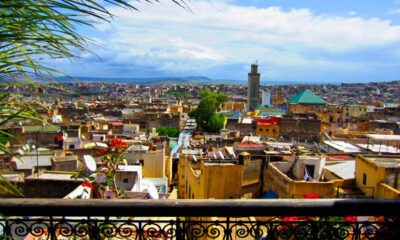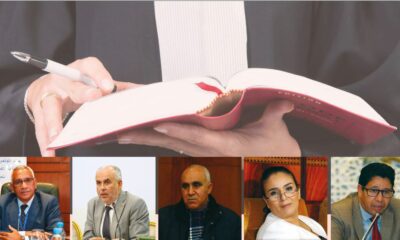Business
BTP: The Construction Sector’s Major Leap Forward
Amid a significant restructuring phase, the construction and public works sector is entering a new cycle of robust growth, driven by major structural shifts closely tied to the planning of the 2030 World Cup. The industry’s national leaders are spearheading this transformation.

The construction and public works (BTP) sector is in a state of high activity. As a linchpin of Morocco’s economy—contributing over 6% of GDP and employing more than one million people—the sector is undergoing profound transformations, underscored by the recent announcement of a strategic external growth operation involving two industry heavyweights.
On February 19 of this year, TGCC Group, led by Mohamed Bouzoubaâ (one of the sector’s leaders, with revenues surpassing 8 billion dirhams [MMDH] by the end of 2024), announced an agreement to acquire 60% of the capital of its competitor, STAM, owned by Louis Raymond Baudrand. STAM holds a 55% stake in VIAS, a national leader in roadworks. The acquisition will be accompanied by a capital increase at STAM to finance an additional 25% stake in VIAS.
The transaction values the entire enterprise at 4.3 billion dirhams (MMDH). TGCC confirms that financing for the acquisition has already been secured, with the deal expected to close in the second quarter of 2025, pending approval from Morocco’s Competition Council.
This unprecedented transaction—remarkable both for its scale and the stature of the players involved—will position TGCC as a regional powerhouse. Similar consolidation moves among other sector players of varying sizes cannot be ruled out, particularly given favorable market conditions.
Beyond the highly promising outlook for construction activities, recent crises—including the 2020 Covid pandemic and the 2022 Ukraine war—have left lasting scars on the corporate landscape. Many companies remain in financial distress, while others are undergoing safeguard procedures or have ceased operations entirely.
In this context, the restructuring of Morocco’s BTP market is set to accelerate. The overarching goal is to achieve critical mass and position firms across the entire value chain to fully capitalize on golden opportunities emerging in the lead-up to 2030 and beyond.
Unprecedented Markets in Scale and Number
The announcement of this strategic operation comes at a time—no coincidence—when growth prospects for Morocco’s construction and public works (BTP) sector are more positive than ever after years of relative stagnation. This optimism is fueled by the government’s massive pipeline of projects tied to major global events Morocco is preparing to host, which promises to launch a new cycle of strong growth for sector players, particularly industry giants like SGTM, TGCC, Jet Contractors, Sogea, and Bymaro.
As highlighted by BMCE Capital Global Research in a recent sector analysis: “Since 2023, Morocco’s BTP sector has shown robust recovery, closely linked to the co-hosting of the 2030 World Cup.” The research firm adds: “The next five years will be marked by the rollout of significant investment programs to prepare the Kingdom for this landmark event, spanning sports infrastructure, logistics, and tourism facilities.”
Stadiums, roads, highways, airports, dams, railways, hotels, the reconstruction of Al-Haouz, and government housing initiatives… These numerous large-scale projects, launched almost simultaneously, are being fiercely contested by Morocco’s BTP champions.
The investment figures for these projects are staggering. For stadiums alone, nearly 20 billion dirhams (MMDH) will be allocated between 2023 and 2028, with construction activities accounting for the largest share.
In highways, Autoroutes du Maroc plans a 7.7 MMDH investment from 2025 to 2027 to expand the national highway network from 1,800 km to 3,000 km. For tourism, BKGR forecasts the construction of 40,000 new hotel rooms, bringing Morocco’s total to 330,000 nationwide.
Airport expansion, where competition among industry giants will be intense, is expected to see investments of 40 MMDH by 2030. This is in addition to colossal funding earmarked for railways and dam construction.
To secure these contracts—distinguished by their increasing complexity and scale—sector leaders have heavily invested in modernizing processes, upgrading IT systems, acquiring advanced technical equipment, and renewing logistics fleets.
TGCC, for instance, has significantly expanded its machinery inventory to rapidly deploy resources across large-scale projects. Between 2022 and 2023, its investments surged from 71.8 million dirhams (MDH) to 180 MDH—a 100% increase in one year.
Today, Morocco’s major construction groups are well-positioned to dominate this unprecedented infrastructure race. Early tender results confirm this: national BTP leaders are repeatedly outpacing foreign construction giants to secure high-profile contracts.
Construction Materials Booming
Professionals in construction materials—led by cement manufacturers and steel producers—are emerging as major beneficiaries of the infrastructure frenzy. Early signs point to surging demand. Cement sales, for instance, rebounded by 9.5% in 2024 to reach 13.7 million tons (MT) after years of sluggish performance.
This growth was driven primarily by infrastructure projects, where consumption rose 22.1% year-on-year, followed by ready-mix concrete (+20%) and prefabricated materials (+11%). 2025 is off to a strong start, with January sales up 13.8% to 1.3 MT, confirming the robust momentum expected through 2030.
Steel producers are also poised to play a pivotal role as key suppliers for infrastructure deployment. In 2024, sales of long steel products (used in reinforced concrete and structural frameworks) surged to an estimated 1.5 MT, reflecting early benefits from the sector’s growth.
The coming years look even brighter. Companies like Sonasid will be critical to infrastructure projects in railways, airports, hotels, and hydraulic works. The CEO noted that this demand could boost the firm’s production by 20-25%.













